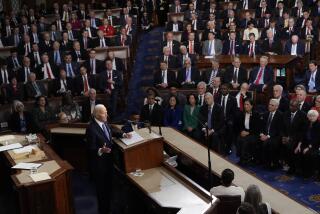Job gains were solid in October but wage growth still lags
October’s solid labor market growth of 214,000 net new jobs helped push the unemployment rate to a six-year low, but wasn’t strong enough to boost workers’ wages significantly, economists said.
“Employers are still holding all the cards,” said Elise Gould, senior economist at the Economic Policy Institute, a think tank focused on the needs of low- and middle-income workers.
“There are so many potential workers out there that employers don’t really need to pay higher wages,” she said.
Wage growth picked up slightly in October, with average hourly earnings rising three cents to $24.57 after being flat the previous month, the Labor Department said Friday.
Overall, wages were up 2% for the 12 months ended in October. That was a bit better than the 1.7% inflation rate, but not nearly enough growth to make up for the ground lost during the Great Recession.
The top-line numbers of the Friday’s report were good.
October’s job gains were down from the previous month’s upwardly revised figure of 256,000 and below economists’ expectations, but still represented solid growth.
The Labor Department said job growth was slightly stronger in August and September than originally estimated, with 31,000 more positions added.
Those revisions pushed August’s figure to 203,000, meaning the best streak of job creation since the 1990s did not end in the summer, as was originally thought.
With October’s solid growth, the economy now has added more than 200,000 jobs for nine straight months. That’s the best performance since a 19-month streak from 1993-95.
Job creation has averaged 222,000 for the 12-month period ended Oct. 31.
------------
For the Record
Nov. 7, 7 a.m.: A previous version of this post stated that job creation has averaged 222,000 so far this year. The figure is for the 12 months ended Oct. 31.
------------
The unemployment rate fell 0.1 percentage point to 5.8%, the lowest since July 2008.
Unlike some previous declines, the drop was not driven by discouraged unemployment workers giving up their job search.
The civilian labor force increased by 416,000 in October, the first monthly growth since June.
That led the labor force participation rate to tick up 0.1 pecentage points to 62.8% last month after hitting the lowest point since 1978.
The private sector added the vast majority of October’s net new jobs, with government payrolls growing by only 5,000.
But lower-wage industries saw the biggest increases in hiring, which kept wage growth low.
Restaurants and bars added 42,000 net new jobs, while retail shops added 27,000, the Labor Department said.
Higher-paying sectors lagged in job growth. Manufacturers expanded their payrolls by 15,000 and construction firms by 12,000.
“The largest job gains were in the restaurant industry, where most of the workforce relies on tips—and the federal minimum cash wage is just $2.13 an hour,” said Joan Entmacher, vice president for family economic security at the National Women’s Law Center.
“Finding a job that pays poverty-level wages doesn’t feel like a recovery,” she said.
Voters in Alaska, Arkansas, Nebraska and South Dakota approved increases in the minimum wage in Tuesday’s elections. Voters in Illinois approved a nonbinding measure to raise the minimum wage there as well.
As of Aug. 1, 23 states and the District of Columbia had minimum wages above the federal level of $7.25 an hour, according to the National Conference of State Legislatures.
President Obama has urged Congress to raise the minimum wage to $10.10 an hour from $7.25, but Republican leaders oppose the move.
Analysts said a higher federal minimum wage would help increase workers’ earnings, but real improvement only will come with stronger job growth that forces employers to do more to lure hires.
Economists had expected the October report to show the economy added 240,000 net new jobs last month and the unemployment rate to hold steady at 5.9%.
Federal Reserve officials are watching the labor market closely as they try to determine when to start raising their benchmark short-term interest rate.
After job growth picked up sharply this year and the unemployment rate fell faster than expected, central bank policymakers last week determined the economy was strong enough to end another key stimulus program.
The Fed stopped the controversial bond-buying program it began during the 2008 financial crisis and had run off and on for most of the last six years.
The latest round was started in September 2012 and was designed to push down long-term interest rates to help lower the unemployment rate, which was 8.1% at the time.
The other major Fed stimulus has been its near-0% short-term interest rate.
Continued improvement in the labor market is crucial to the decision about when to start raising the rate, which analysts expect to happen in the middle of next year.
For breaking economic news, follow @JimPuzzanghera on Twitter







